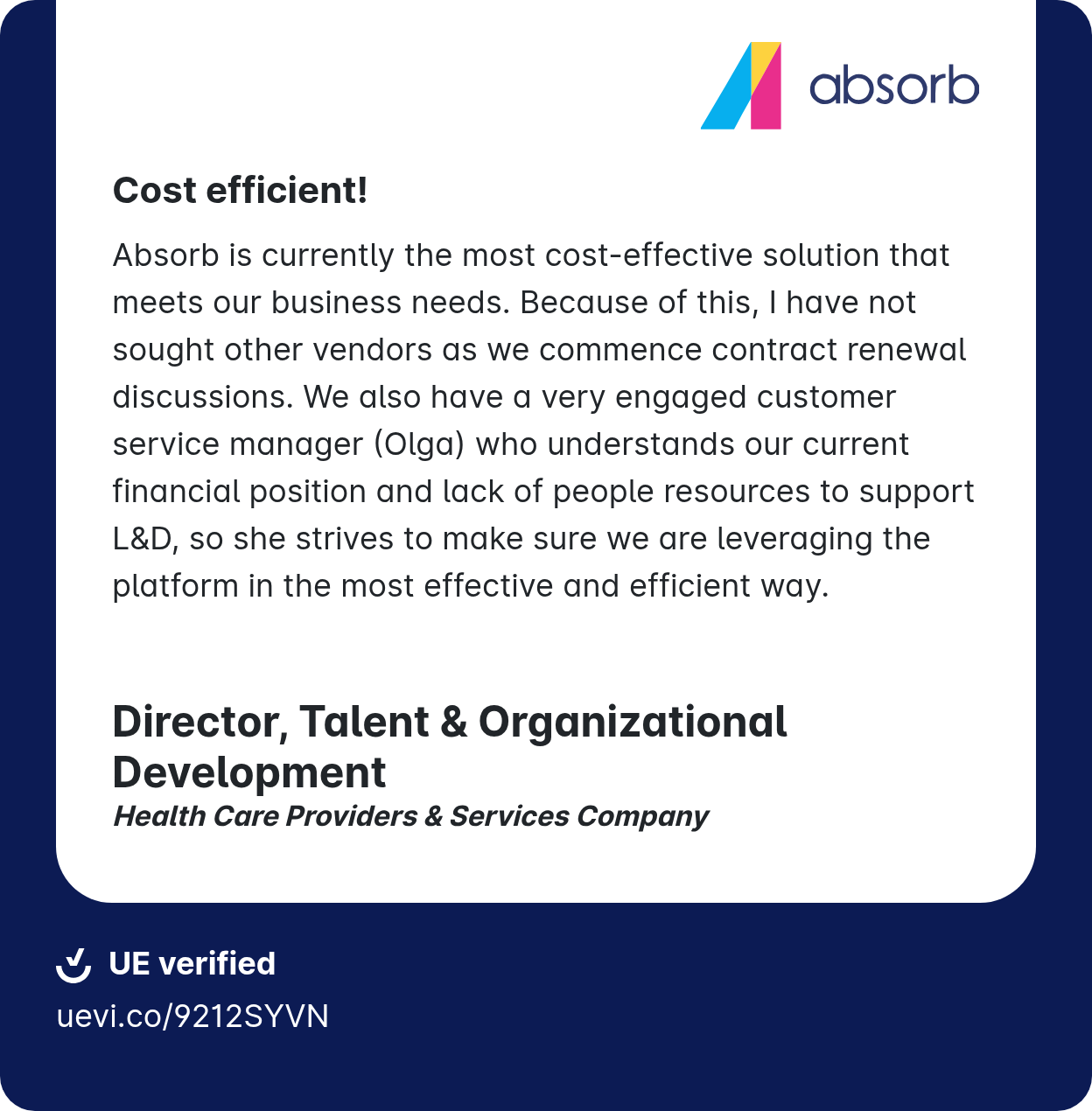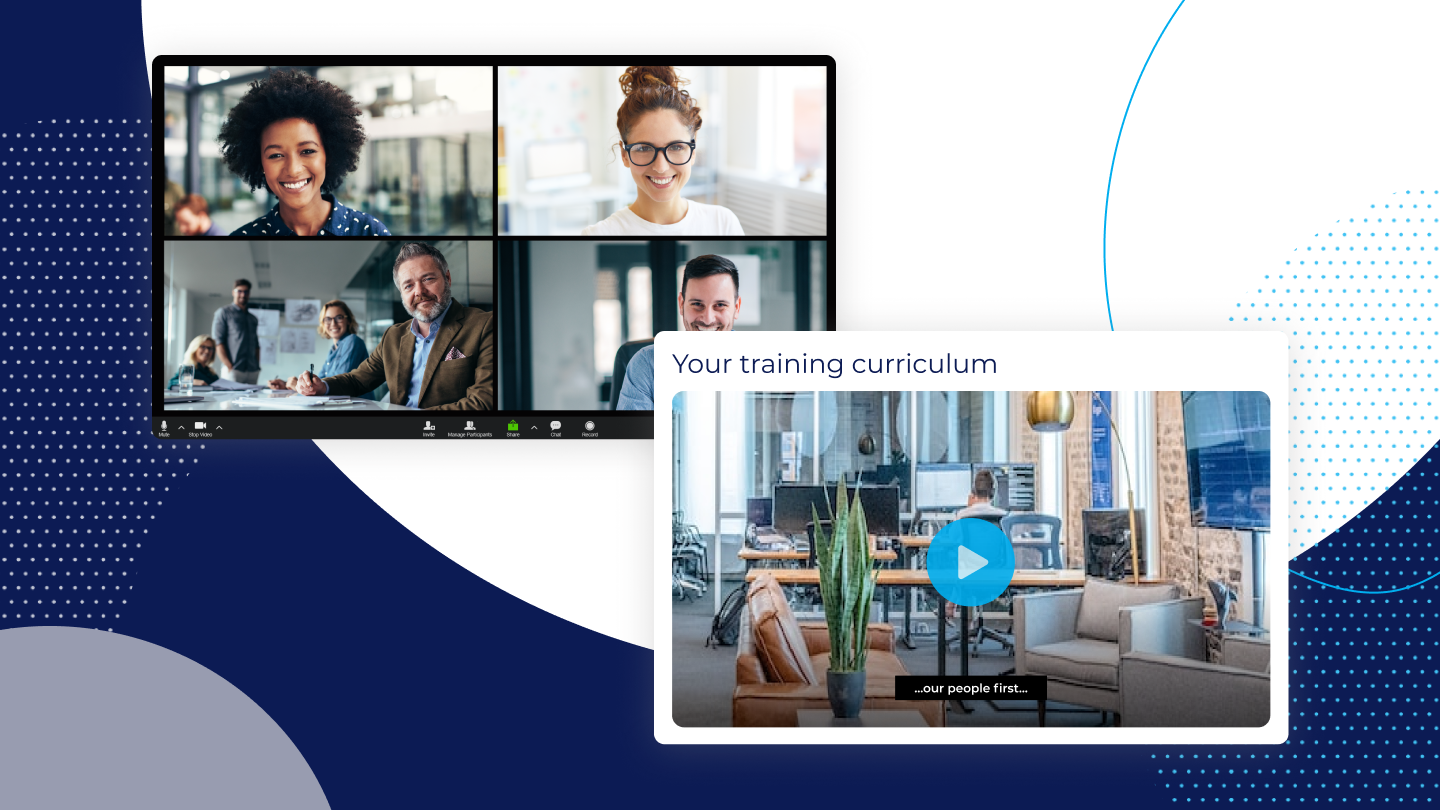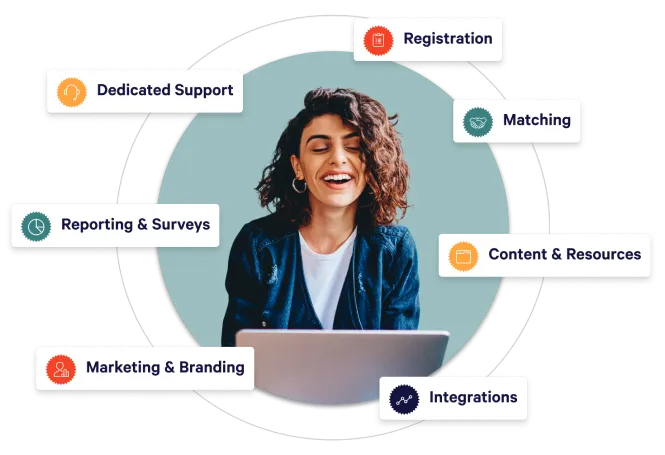Cut costs or cut corners? Your team doesn’t have to choose. Here’s how it’s done.
Has your budget been cut this year? You’re in good company. Across industries, leadership programs and DEI initiatives are being scaled back in favor of efficiency-focused training.
In a recent podcast interview, Absorb CEO Kimberly Williams explains where HR tech dollars are actually going in 2025 and why strategic learning investments are being overlooked.
The truth is, you don’t have to sacrifice outcomes to meet budget expectations. A strategic learning system (SLS) helps you do it all: improve learning performance, maximize profits, and stretch your budget further.
These 19 solutions to L&D budget challenges will help if you:
Face large budget cuts that limit your initial vision for this year
Experience program overload or admin burnout
Are in a scaling phase with limited resources
Face budget pressure from leadership or finance
Want to shift from learning management to automation
Aren’t yet measuring impact effectively
Let’s reframe these challenges. We’ll get into cost-cutting not as a threat, but as an opportunity to build a more agile, outcome-driven L&D function.
.How does a strategic learning system (SLS) support cost-efficiency?
A strategic learning system (SLS) turns any cost-efficiency goal into a training opportunity, and every training opportunity into a cost-efficient goal. Using AI, an SLS automates and enables every learning process from foundational to advanced learning enablement functions, saving time and money. It’s about more training development, and less time sunk into the process.
Setting cost-efficiency goals with strategic learning isn’t unlike the enterprise approach to AI. At Learning Technologies 2025, a major theme in learning leadership was reframing AI as a mindset rather than tools. No longer siloed into a department or single initiative, it’s becoming embedded in all that we do, who we service, and how we innovate. An SLS is similar. It’ll help you maximize profit in every corner of your business, minimize spend, and position learning as a critical lever of your organization.
Where an SLS is cost-efficient
As a learning leader, you might be juggling onboarding, customer education, or scaling partner programs globally. An SLS helps you do more with less. Here’s how an SLS delivers cost-saving benefits across your most critical training use cases:
Are you reading this and thinking, “where do I start?!”
Our ROI calculator can help you estimate the impact of switching to an SLS. Enter a few details about your organization to uncover potential cost savings, time reductions, and efficiency gains tailored to your team. It’s a quick way to put real numbers behind smarter training decisions. Try your ROI calculator
Here’s how it works:
19 L&D budget challenges solved with a strategic learning system (SLS)
You’ve read correctly! Here are 19 solutions to match your budget to your goals with an SLS. Get ready to learn all the data and functionality you need to get your cost-efficient L&D training plan approved.
1. “We can’t prove training’s financial impact.”
Without clear proof of impact, it’s hard to connect spend to strategic value. If you have difficulty showing financial value from training investments, this limits your ability to justify or expand budgets.
An SLS tracks learner outcomes, engagement, and progress, tying these directly to business performance metrics. This gives you data-driven insights to clearly demonstrate training’s impact on the bottom line.
How an SLS stretches your L&D budget:
Uses advanced analytics dashboards to monitor learning impact in real time
Automates custom ROI reports for stakeholders and executives
Links learner progress data with key business KPIs for clear attribution
An SLS makes cost-efficiency a natural part of your workday, your team meetings, and your planning. And over time, the rewards will snowball. When research firm Forrester evaluated the financial benefits of Absorb, the Total Economic Impact™ study noted the savings generated from shared learning among employees, customers, and partners. The reported savings of $2.4 million contributed to the overall revenue-positive impact of investing in Absorb.
2. Employees forget training content too quickly.
We know this is a tough one. High retraining costs come from knowledge decay when learning isn’t reinforced effectively, forcing repeated spending.
An SLS incorporates spaced repetition and microlearning features that reinforce knowledge over time, reducing the need for costly retraining.
How an SLS stretches your knowledge retention budget:
Automates nudges and reminders
Embeds training modules into employees’ daily applications
Tracks retention metrics with learner progress reports
No more rushed onboarding that’s disconnected from real tasks. No more one-and-done training instead of continuous learning. Just better knowledge retention and ongoing support for new tools or processes.
3. Onboarding takes too long and costs too much.
Slow ramp-up delays productivity and increases hiring costs, reducing ROI on new employee investments. By offering personalized onboarding paths and automating reminders, an SLS accelerates training, saving time and money while improving new hire experiences.
How an SLS stretches your onboarding budget:
Creates personalized, role-based onboarding journeys
Automates enrollment and progress notifications
Enables mobile learning for on-the-go access and faster completion
Looking for a more cost-effective way to onboard new hires? See how Trojan Storage cut onboarding time from months to weeks and saved over $20,000 with Absorb’s Create AI.
4. We repeatedly retrain employees.
High retraining costs from lack of reinforcement inflate budgets and reduce efficiency. An SLS automates refresher training and spaced repetition to reduce the frequency and cost of retraining.
How an SLS stretches your retraining budget:
Schedules refresher courses automatically
Uses automated nudges before knowledge decay occurs
Tracks retraining reduction metrics to measure impact
5. Scaling training is overwhelming.
Manual processes strain growing L&D teams, increasing labor costs and reducing agility. Automation in an SLS reduces manual tasks, freeing L&D teams to focus on strategy while scaling training efficiently.
How an SLS stretches your scalability budget:
Automates user enrollment and training reminders
Uses self-service portals to empower learners
Generates automatic compliance and progress reports
Scheduling platform leader, When I Work, had trouble scaling training in a newly remote environment without overloading their L&D team. By adopting Absorb’s self-serve onboarding tools, they eliminated manual Zoom sessions and reduced ramp-up costs by over $32,000.
This shift freed their team to focus on strategic initiatives while ensuring consistent, high-quality training across departments. It’s a clear example of how automation in an SLS reduces labor strain and scales training without scaling costs.
6. Our people don’t complete training.
Low completion wastes budget and stalls skill growth, undermining your investment in learning content. An SLS personalizes learning paths and automates reminders, improving engagement and completion rates to get the most out of your training investment.
How an SLS stretches your engagement budget:
Delivers adaptive, personalized learning paths
Automates reminders and completion nudges
Implements gamification features to increase motivation
7. Training pulls employees away from work too much.
Long or irrelevant training reduces billable hours and productivity, increasing indirect costs. With bite-sized, on-demand content delivered through an SLS, employees can learn efficiently without sacrificing productivity.
How an SLS stretches your productivity budget:
Embeds microlearning into daily workflows
Offers just-in-time training modules on demand
Monitors time spent versus outcomes to optimize training length
8. We can’t identify skill gaps early enough.
Late detection causes costly project delays and misallocated training funds, spent too late or in the wrong areas. An SLS uses pre-assessments and real-time tracking to identify skill gaps early. The shift helps prioritize training spend where it’s needed most to avoid costly rework.
How an SLS stretches your talent development budget:
Uses pre-assessments to pinpoint skill gaps before projects begin
Monitors learner progress and skills acquisition with live dashboards
Aligns training investment with data-driven priority areas
Want more on ways to overcome skill gaps?
Read the 10 ways to close skills gaps with a strategic learning system (SLS).
9. Training doesn’t link to actual job performance.
Learning disconnected from daily work fails to drive measurable productivity, wasting spend.
By integrating training objectives with performance metrics, an SLS ensures learning translates to real-world results.
How an SLS stretches your performance budget:
Connects learning goals directly with KPIs
Uses reports linking training completion to job performance
Aligns course content with business objectives
10. “We don’t know which training to cut or expand.”
Lack of data leads to inefficient resource allocation, with money spent on low-value courses. An SLS provides detailed analytics on course usage, engagement, and outcomes to guide smarter investment decisions.
How an SLS stretches your resource allocation budget:
Analyzes course engagement and completion rates
Tracks ROI per program using built-in dashboards
Identifies and retires low-impact content to free resources
11. Managers don’t coach consistently.
Missed coaching increases turnover and recruitment costs, making retention spending less effective. By equipping managers with data-driven coaching tools and progress insights, an SLS supports consistent coaching that boosts employee retention.
How an SLS stretches your retention budget:
Provides manager dashboards linked to team training data
Uses automated coaching prompts based on learner progress
Schedules reminders for regular coaching check-ins
L&D leaders predict that lack of growth opportunities for employees will be the number one cause of turnover in 2025. To reframe your enterprise learning, read Together’s Enterprise L&D in 2025: Predictions and Trends.
12. Tracking learner progress is a manual headache.
Admin time wasted chasing incomplete training inflates overhead and delays reporting. Real-time dashboards and automated alerts in an SLS save administrative time and ensure training stays on track.
How an SLS stretches your admin budget:
Sets up live learner progress dashboards
Automates notifications for incomplete training
Integrates with HR systems for seamless reporting
13. Compliance training causes costly errors.
Non-compliance leads to fines and operational risks that strain budgets and resources. Automated compliance workflows and audit-ready reporting in an SLS minimize errors and associated costs.
How an SLS stretches your risk management budget:
Automates assignment and tracking of compliance courses
Generates audit-ready reports easily
Schedules recurring certification reminders
14. Training isn’t relevant or personalized.
Generic content causes disengagement, wasting time and money without skill gains. Personalized, adaptive learning in an SLS boosts relevance and engagement, increasing the value of your training spend.
How an SLS stretches your engagement budget:
Uses adaptive algorithms to tailor learning paths
Segments learners by role or skill level
Measures personalized learning outcomes for continuous improvement
15. “We rebuild courses every year from scratch.”
Annual course rebuilds waste time and money that could be saved with a modular design. Modular authoring and version control in an SLS streamline content updates, cutting redevelopment time and costs.
How an SLS stretches your content development budget:
Uses modular authoring tools to build reusable content blocks
Implements version control to update without full rebuilds
Archives and repurposes course elements efficiently

Meet our budget-confident customers
16. Global training is inconsistent and inefficient.
Managing training across regions causes duplication, delays, and high translation costs. An SLS manages localization, regional access, and versioning to reduce redundancy and streamline global training.
How an SLS stretches your localization budget:
Manages regional content versions in one platform
Automates geographic access controls
Leverages translation memory and reuse features
17. Learners don’t understand why training matters.
Low motivation and completion increase wasted spend due to unclear purpose. Clear communication of course relevance and linkage to business goals in an SLS boosts learner motivation and completion.
How an SLS stretches your motivation budget:
Communicates course goals and business impact upfront
Links learning objectives to individual KPIs
Uses storytelling and real-world examples in content
18. Our learning systems don’t integrate with other tools.
Disconnected platforms create manual work, data silos, and inefficiencies. APIs and prebuilt connectors in an SLS automate data flow, reducing manual work and errors.
How an SLS stretches your IT budget:
Uses APIs to connect with HRIS, CRM, and performance systems
Automates user provisioning and reporting
Syncs learning data across platforms seamlessly
19. Training cost per learner is too high.
High per-learner costs limit scaling and reduce overall cost-efficiency. An SLS uses automation and scalable cloud infrastructure to lower cost per learner without adding headcount.
How an SLS stretches your cost-per-learner budget:
Automates enrollment and course delivery
Leverages scalable cloud platforms to reduce overhead
Analyzes and optimizes cost-per-learner metrics
Cost-efficiency is an SLS mindset
Training budget cuts are here, but that doesn’t mean your programs have to stall. And you don’t need an MBA to fix it. When you start to operationalize strategic learning, you’ll naturally start to think like a strategic learning consultant.
The next step? Work across teams to dive deeper, starting with these questions:
Are your learning programs measurably shortening ramp time or improving performance for sales, support, or technical teams?
Is your team still bottlenecked by L&D-only content creation, or have you enabled SMEs to scale knowledge sharing across the org?
How much of your support budget is going toward issues that better training could prevent?
Are your learning programs driving revenue or draining resources?
By solving common budget challenges with automation, personalization, and analytics, an SLS empowers your team to do more with less, without compromising learning outcomes.








